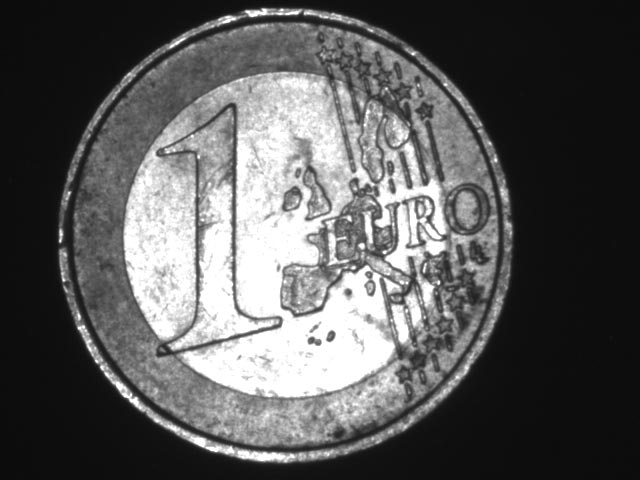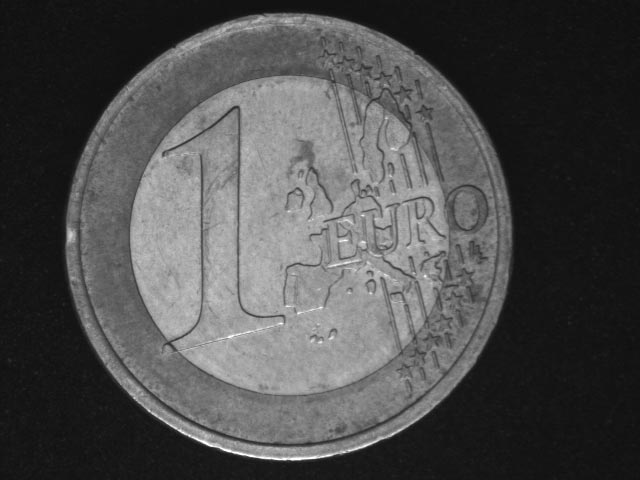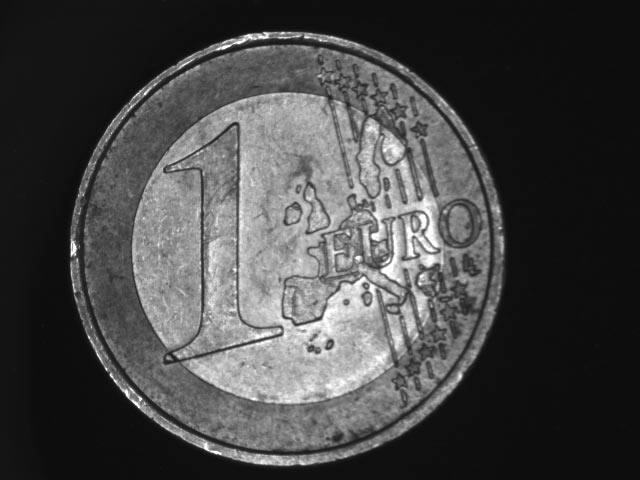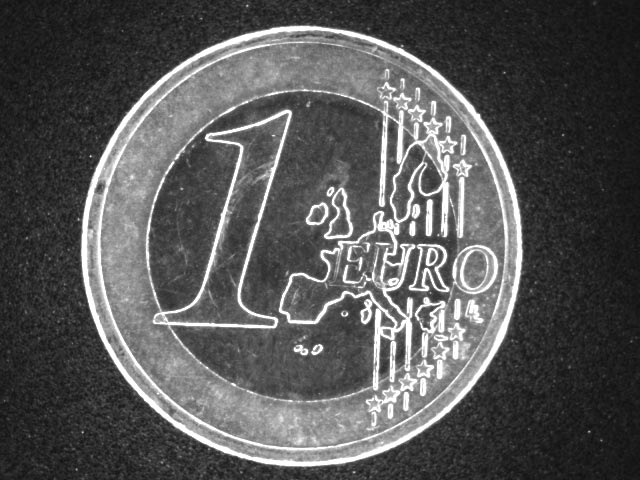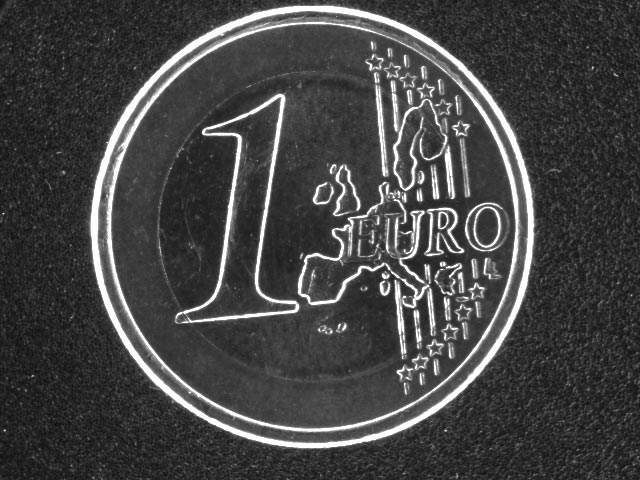Lighting techniques for machine vision
The main task of lighting is to create contrast between the object features to be detected. A variety of parameters can determine the light source, which creates an interaction with the test object and its individual material properties.
Interaction between light source, object and camera
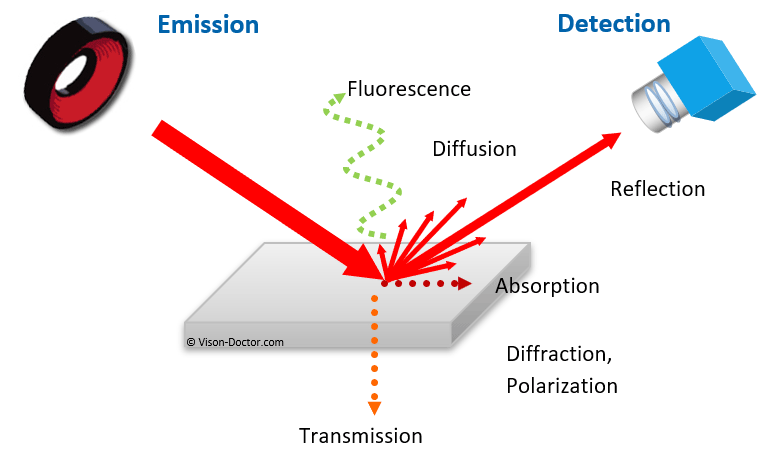 |
Depending on the material surface, a large number of effects appear there. The incident light is partly absorbed and, depending on the material surface, parts of it are reflected and strayed. In case of opaque, semi-transparent or translucent materials, the light can penetrate through the body (transmission). In some cases, the light is even polarised or diffracted at the surface.
Usually one of these effects never appears alone, but it is always a combination of several effects. Even a high-quality mirror reflects only about 95% of the incident light.
Properties of illumination
In the following we deal with the possible parameters of illumination and the different lighting techniques. They must be selected in such a way that a perfectly evaluable image is generated in combination with the material properties of the test object.
Light can ...
- incide on the test object at a certain angle of incidence
- have a certain colour (red, green, blue, white with a particular colour temperature, infrared, ultraviolet)
- be direct or diffuse
- have coherent light properties (laser)
Angle of incidence of the illumination
One important method is the use of light from different spatial directions:
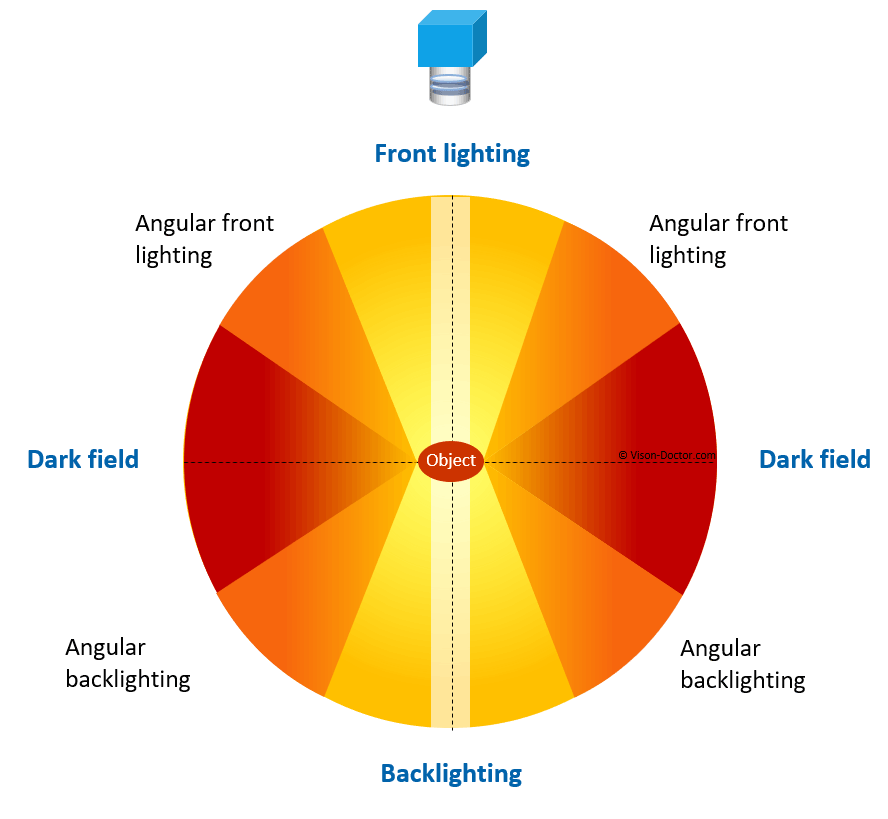 |
Light beams can shine onto the object from above, at angles from one side or all around, shallowly or from the opposite side. Depending on the surface shape, material texture and structure, light is scattered, absorbed, reflected or transmitted on the object or it can cast a shadow. In addition to the direction of the illumination, it is very important whether the light is collimated and diffuse.
Classic lighting techniques:
- direct incident light
- diffuse incident lighting
- lateral light at angles
- illumination at a shallow angle from all sides: dark field
- transmitted light (backlit image)




